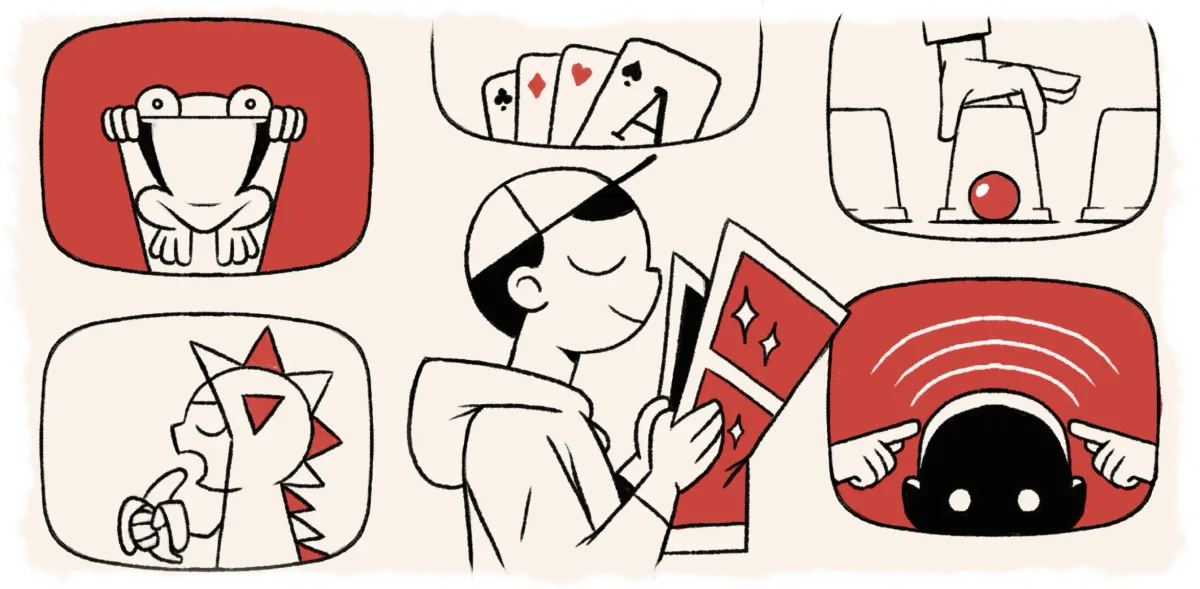Bringing Up Your Magic
Pete McCabe's advice for magicians.

When all is said and done, what’s the biggest difference between professional and amateur magicians? One difference is that amateurs like me have it much easier than professionals.
For example, most working pros need their tricks to be repeatable without having to reset a gimmick or stack. If you’re doing walkaround magic at a private party or restaurant, your job is basically to approach a group of people and do a routine for them. If you have to walk to the bathroom or stand in a corner fiddling with your props after every group, it’s going to impact the number of people you can perform for.
As an amateur, my performing environment is my living room, a friend’s house, or my classroom (I’m a teacher). I don’t care if a trick ends reset. I’m either doing it just once, or I have an entire 6-minute passing period before the next class comes in. I can use all sorts of wonderfully impractical methods.
But there is one aspect of magic that is much harder for amateur magicians, and that is what I’m here to help you with. I’m talking about introducing your performance. I don’t mean introducing a trick—having a good first line for a trick is important for both amateurs and professionals. That’s a separate article.
I’m talking about bringing up the idea of you performing a magic trick for your friends in the first place. What’s the best way to introduce that subject—that you would like to perform a trick in a social setting? What exact words do you say?
This is a scripting challenge most magicians never even consider.
Step One: This is Not Normal
Suppose you are hanging out with a few friends, and one of them, who is not a professional singer, asks if they can sing a song for the group. That would be weird, right? It's not bad necessarily, but it's definitely weird. I’m 63, and I don’t think that has ever happened to me.
An amateur magician asking to do a trick for their friends is exactly that weird.
So, step one is to understand and appreciate that it is not normal for you to take over an informal situation and perform your art. That doesn’t mean it’s bad; magic is inherently not normal. Still, acknowledging this is a great way to normalize this part of the strangeness—that you are taking over the situation—so your friends can focus on the other-worldliness of your miracles.
For a professional, this is almost never an issue. For one thing, any venue with a magician is not an informal situation, so it’s normal for there to be an entertainer. If you’re doing walkaround magic at a party, you can walk up to a group, wait for a break in the conversation, and say, "Hey, I’m here to entertain you with magic." At a restaurant gig, you might even have tabletop tent cards placed on all the tables, alerting diners to your magical presence. (If not, get some.)
But if you’re an amateur, how do you bring this subject up in conversation? This is possibly the most important moment in your entire performance. An awkward introduction like, "Wanna see a card trick?" can easily dig you into a hole that you will spend the entire trick trying to climb out of.
Three Extremely Valuable Things
A good introduction to your performance can do three extremely valuable things.
- A good introduction can get the spectator genuinely interested in seeing the trick rather than just politely watching. If you sometimes get polite applause for your tricks, a good introduction can definitely help.
- It gets the spectator on your side, so they’re not working against you. They are much more likely to follow instructions correctly and things like that.
- It can get them in the right mindset to enjoy a magic trick. This is the best thing any introduction can ever do, I think.
A good performance introduction is a priceless asset for any amateur—or professional, for that matter.
Once I started working on ways to introduce my performance separately from introducing the trick itself, I quickly got better and better at it. Here are four examples I’ve used, listed in increasing order or effectiveness.
